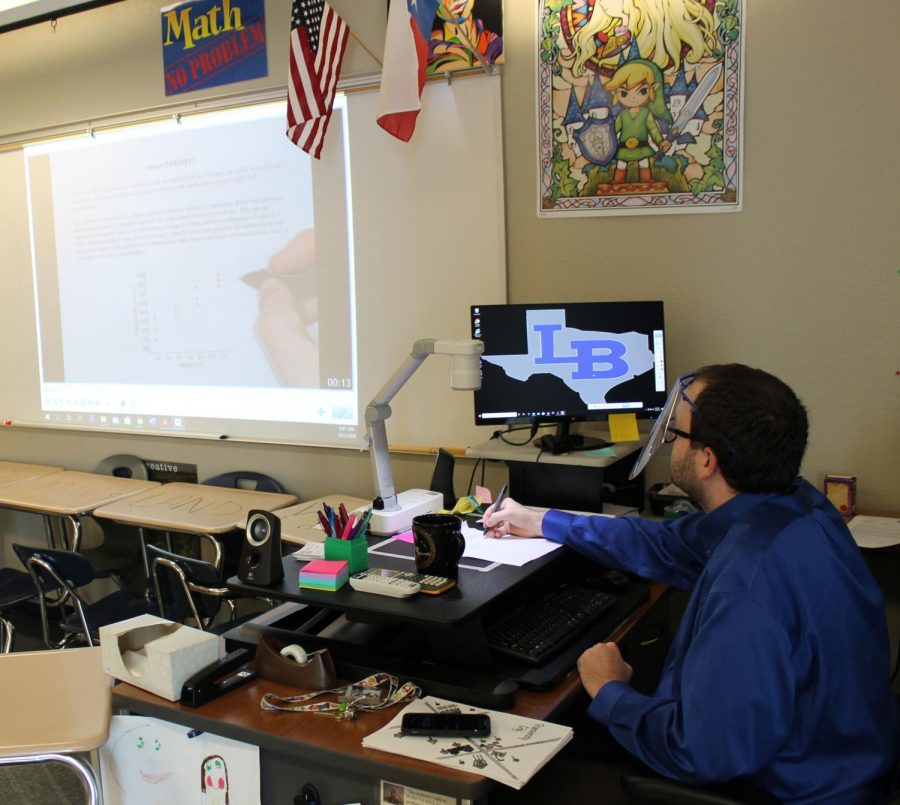125 Asynchronous Students Expected To Return To Campus
Math teacher Jesse Cox teaches AP statistics under his document camera. He often uses this method to record his lessons for virtual students.
September 30, 2020
Out of the 330 asynchronous learners (as of the six weeks period), the school is expecting 125 of them to come back to school at the beginning of the second nine weeks.
“At this time, we have only had 10 students moving to virtual for the second nine weeks,” Principal Joey McQueen said.
Additionally, an email was sent out to the students and parents yesterday about suspending students from remote learning who have excessively low attendance or low grades. These students will be required to return to school Oct.13.
“Remote learning is more self paced and you have to show more responsibility to get your work done,” junior Bryli Wilson said. “You don’t really have anyone holding you accountable but yourself.”
There are 1,020 students enrolled at the high school, so this means that 32% of students are online. It would take up to 3% of the “face to face” students to contract COVID-19 for the school to go fully virtual.
“We would have to have 21 active cases before they close our school down,” McQueen said. “We have had 10 positive results with 5 active cases at the time.”
Many students feel this has been a chaotic year with plenty of uncharted territory and they are responding accordingly.
“I’m thinking about going online for two reasons,” junior Quinn Pace said. “The fact that it will be easier to get my work done, and I will be doing the same thing as most of my friends.”
Some students feel that virtual learning is a lot less stressful than going to school.
“I prefer virtual,” junior Isabel Ybarra said. “I like being able to get my work done at my own pace and at my own time. I plan on staying virtual for this upcoming nine weeks to see if it continues to help me.”
Asynchronous students feel that they are a lot safer at home and have less chances of getting exposed to COVID-19.
“I work at Storm’s and show pigs and need more time to get things done than just after school,” Wilson said. “I am also around my grandparents everyday and don’t want to risk getting them sick.”

